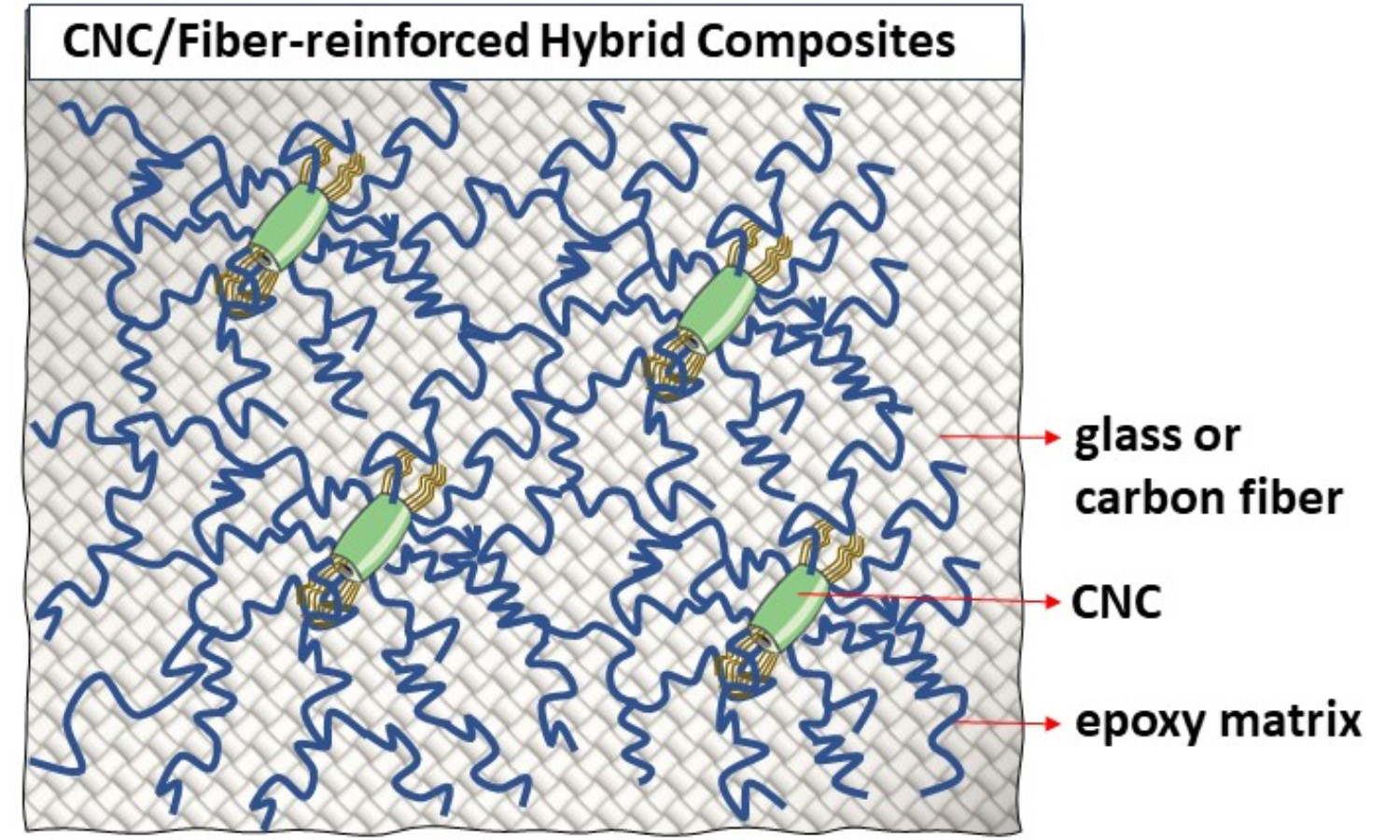Improving the mechanical properties of fiber-reinforced polymer composites through nanocellulose-modified epoxy matrix
Vol. 18., No.1., Pages 61-71, 2024
DOI: 10.3144/expresspolymlett.2024.5
DOI: 10.3144/expresspolymlett.2024.5
GRAPHICAL ABSTRACT

ABSTRACT
In this study, the potential use of nanocrystalline cellulose (CNC) modified epoxy nanocomposite as a matrix is investigated for both glass and carbon fiber-reinforced composites. Various amounts of CNCs (1, 2, 4, and 6 wt%) were added to bisphenol A diglycidyl ether-based epoxy resin (DGEBA), and the optimum CNC loading was determined as 4 wt% in terms of mechanical and thermal properties. Compared to the reference sample containing a neat epoxy matrix with the obtained carbon fiber/CNC-epoxy (CNC/epoxy/CF) and glass fiber/CNC-epoxy (CNC/epoxy/GF) hybrid nanocomposites, significant improvements have been determined in the in-plane shear modulus and strength, and flexural modulus, respectively. The mechanical properties improvements of CNC/epoxy/CF hybrid composites are approximately 0.9% higher than the CNC/epoxy/GF hybrid composites. Additionally, the distribution of CNC in hybrid nanocomposites is also investigated by scanning and transmission electron microscopies. It is noted that the homogenous dispersion of CNCs in the epoxy matrix and their diameters varied from 10 to 100 nm are detected at higher magnification.




